By Pete Vack
The way to gain entrance into the realm of the Dallara/Gandini masterpiece that is the Miura is to gently push the door latch button from the Fiat 850 and pull a bit on the chrome fin at the bottom of the row of black fins to the rear of the door window.
“Be careful getting in. Here’s how you have to do it. Get your butt over the seat and gently lower it straight down. Don’t wiggle. Don’t squirm. The reason is because the seats are original cloth inserts and any heavy lateral movement stresses out the material,” said Paul Wilson.

27 year-old Marcello Gandini’s first assignment following his employment by Bertone was to design a body for the Miura chassis. Paul Wilson’s Miura S captures the excitement of the Gandini work of art.
Got it. Easier than I thought and once in, it was low yet comfortable with a great view of the road. The seats are tilted back, and so nicely positioned in the cockpit, one immediately feels right at home, as did Paul, who was my chauffeur. “I definitely feel I’m part of the Miura when driving,” he said. This was no cliché; Paul has raced both SCCA and vintage events for years. He knows exactly what to expect from a performance car.
Peter Paul and Miura
The Miura started right up with a poke at the Webers and despite the V12 sitting right behind us, there was not a lot of engine noise, but cold, it did knock about a bit. Chains, pistons, gearbox noise, and a V12 with all those valves will make noise until heat closes the tolerances. We hit the road, in seeking out places where there was no traffic; no one but Peter and Paul and Miura.
I had experienced one other Miura and was not impressed. It was jagged, in need of many things one could not begin to find to fix. Paul’s Miura, an S model, was downright civilized, and seemed truly altogether. Aside from one repaint, this Miura has never been restored. Just a nice, well-cared-for used car with 35,000 miles on it, says Paul.
Maintaining the bull
“Does it need much maintenance?” I asked. “Not really,” he said. It sits half a year without running, then always starts and runs fine. The carbs have never been touched. Clutch and brake hydraulics have been renewed, the timing chains tightened. The rear springs sagged, giving drastic toe-in and tire wear, so he raised the ride height to proper specs and aligned the rear wheels. The scariest problem was a clutch pressure plate that fractured due to age. After some sleepless nights contemplating a nightmarish engine removal, Paul talked with a Miura expert. “Because of the transverse layout, the clutch is the easiest thing to get at on the whole car,” he was told. “Jack it up, take off the rear wheel and unbolt a brace, and the clutch housing is right in front of you.” It’s a readily available Borg & Beck unit. In no time, the car was healthy again.
“I wouldn’t love it so much if I had to use it as normal transportation,” says Paul. It has minimal ground clearance, no bumpers, no side mirrors or rear visibility. The Ducellier switches are junk. Turn signals sometimes don’t feel like working, the driver’s window doesn’t go down. “Headlights can be a problem too,” said Paul, unperturbed as he rapidly drove the Miura through the vale. “Unless the plastic gears that crank the lights upright are replaced, the headlights will be scanning the sky forever. They break with age. Thankfully Joe Sackey in his book “The Miura Bible”, mentioned a guy who makes replacement brass gears.”
There are roads through the hollows of the Blue Ridge Mountains that I think only Paul knows about. We were on them now, and the Miura was warming up, all those mechanical noises that seemed to be disconnected were now humming harmoniously.
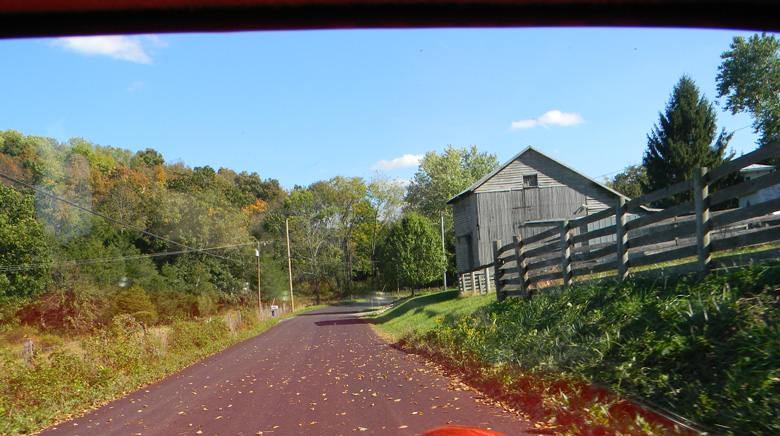
Paul is one of the few Miura owners in this world who on any given day can take his Miura into the countryside and drive it in the manner in which it deserves over roads for which it was designed.
Paul was now concentrating hard on the road, and the Miura was cornering fast and flat, and the brakes—one could feel the massive power of the brakes even as a passenger – brought the car down fast and smoothly as we approached the corners. Under acceleration, there seemed to be a flat spot at low rpm and I pointed this out. “It’s me,” he said, as he pushed the throttle and suddenly the power surged as the cams came on. The Miura takes to a strong approach with the throttle, clutch and gearbox. But out of respect for half century old valve springs, Paul was shifting conservatively at about 6500 rpm, but the urge was incessant; it just wanted to rev more. But neither was Paul hanging about, and at each shift there was that big push and the full volume crash of sound as it accelerates.
The split sump controversy
Oh, that transmission. When the Miura was introduced, the engineers thought it was a good idea to have the transmission use the same oil as the engine, ala Issigonis Mini. It saved space. Later, worried about liabilities, Lamborghini went to a split sump arrangement. Paul’s Miura S was a one of the now-rare single sump cars. “Sackey’s book confirmed what I had been thinking…that if the car is not driven in competition and had regular oil changes, the single sump models pose no problem. I just figured that if I changed oil regularly and drive it maybe 400 miles a year, nothing’s going to wear out during my lifetime.”
Another problem with early cars and today’s gas involved the fuel lines. The original flexible hoses hardened and cracked, and ethanol eats the rubber. Many Miuras have burned. Fuel leaking on the exhaust starts an engine fire, and the front-mounted fuel pumps, clicking away happily next to the battery, empty the front-mounted gas tank contents onto it. A recent YouTube video showed an SV burning to the ground on a London street. Paul’s Miura has well-maintained hoses, and runs on ethanol-free gas. Just to be sure, he’s got a fire extinguisher behind the seat.
Paul’s car is shiny and attractive, but reveals a half-century of loving use. In the original interior, a seam on the driver’s arm rest has opened up. The engine compartment is serviceably clean, but the original black paint is peeling off in places. The engine leaks oil from somewhere Paul has yet to find. A few small spots on the body have minor bubbling under the paint. The poor-quality vinyl covering the trunk has peeled back from the corners. “But anything you see is what Lamborghini put there,” says Paul. A visiting Miura expert was thrilled to see its intact distributor shield, and the only factory-type wiper arms he’d ever seen. “I like it this way instead of ultra-perfect,” says Paul. “I can take a drive anytime I want, without a thought that it will get dirty or maybe pick up a chip.”
What should we make of this?
Ironically, the car fails at the very reason it was created; to attract looks, attention, and envy. Like the original 350GT Lamborghini, the Miura was conceived to be everything the Ferrari wasn’t – after all, that’s what made Ferruccio’s clock tick. Transverse mid-engine, Dallara chassis, a body that would stop everyone in his or her tracks, the Miura is just as strikingly beautiful now as it as it was 50 years ago. But not only did the grazing cows pay no attention to the Miura as it skirted their pastures. People didn’t either. As we drove through the small towns along the byways, the people did not seem to notice. We stopped at a nearby store, which was quite busy, but no one even paid the car a second glance.
Read more about Gandini in this review of Marcello Gandini, Maestro of Design
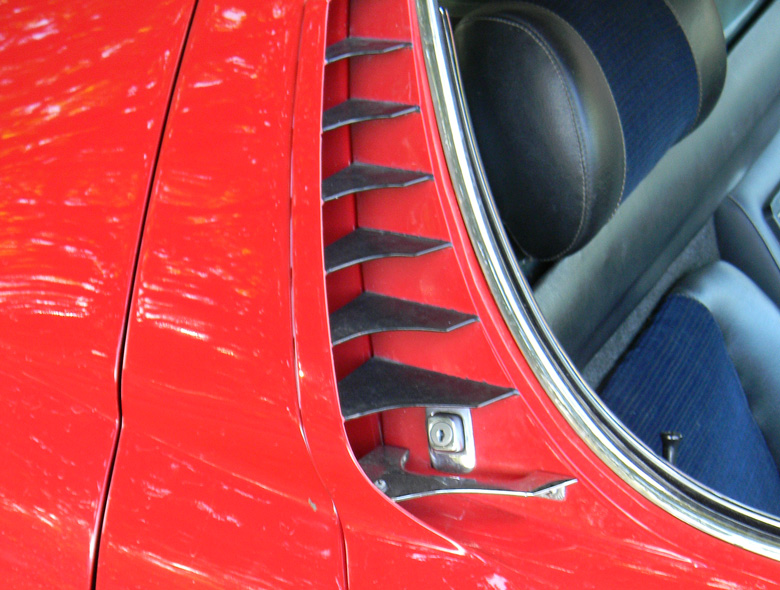
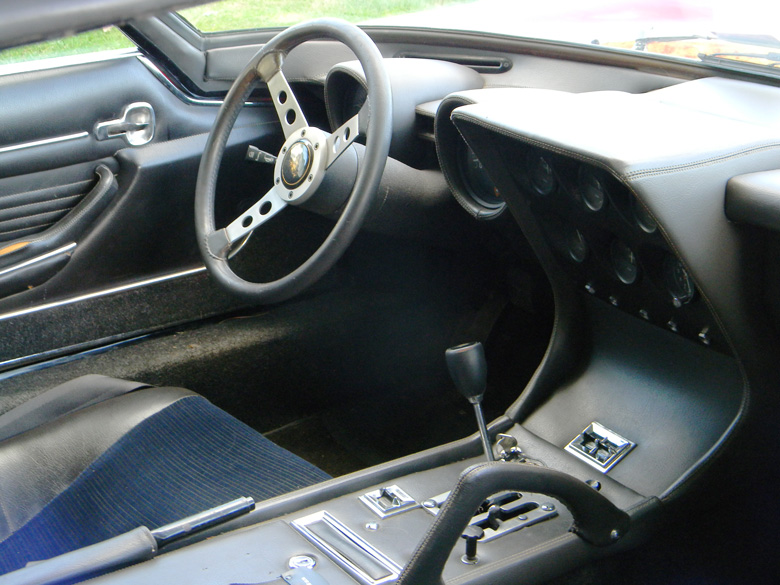
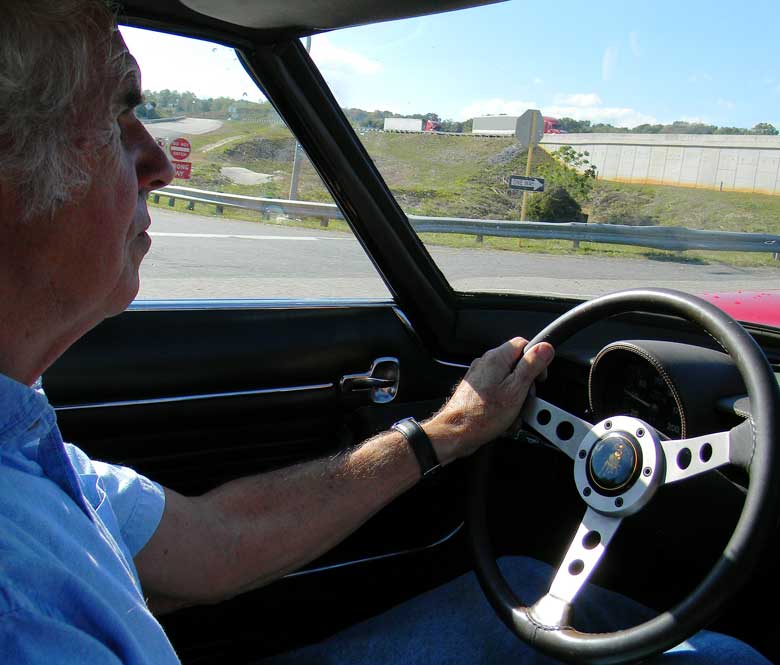
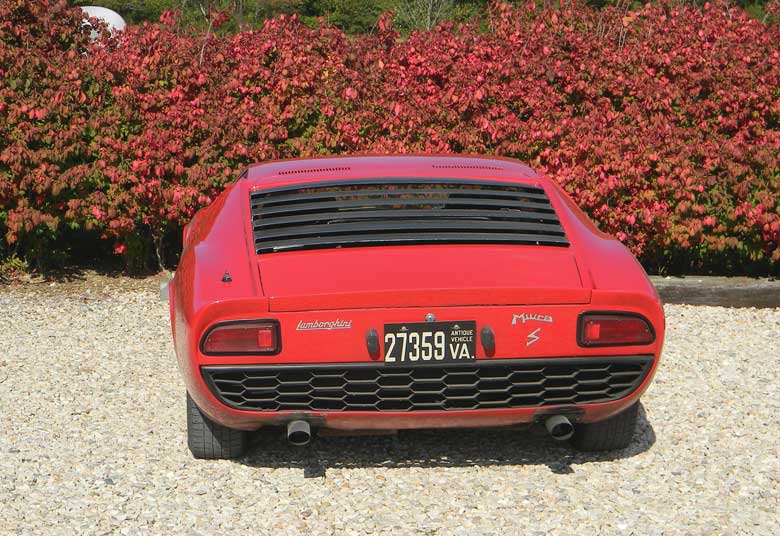
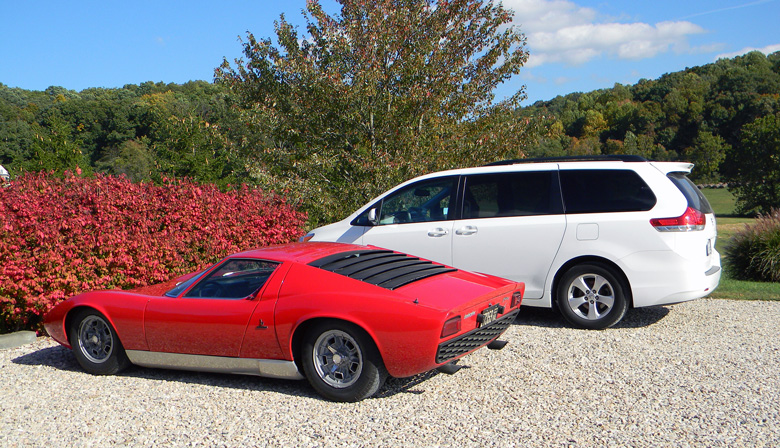
Nice read of an owner who enjoys his car. When I fill mine with gas, most people assume it is a kit car and I just smile and say I enjoy it, so understand the irony, yet find it strangely enjoyable to be in THIS car, yet also strangely anonymous.
For those who experience it however, there seems to be universal joy of the immersion in sound, sight, touch and smells that the Miura provides (insists?) as it embraces both the driver and passenger alike.
maybe it’s because people have been exposed to them for 50 years! or it’s so subtly lovely that it doesn’t grab the eye like all today’s mean-faced hyperaggressively-styled supercars. my p400 only needed u-joints (ford f-150 truck) and a drive gear for the alternator belt (yazoo mower gear slightly modified) in 45k miles. mine came from italy with the thermostat in the trunk, or so i was told as there was nothing in the trunk; so it ran very cold until i got one in. brakes were good or maybe 2 laps on a track. it had one idle jet that clogged often. that’s how i found out it ran on the idle circuit to about 65mph in top gear.
It takes an observant outsider–Pete–to notice what I take for granted, which is how oblivious people around here are to my Miura. The only comment I remember, from my 30 years of driving it around here, is “I like your Corvette!” I murmured something about how I liked it too.
Paul
There can be fewer cars more sensual than Gandini’s masterpiece, the Miura, especially those with ‘eyelashes’. Our gratitude and awe at your talent and work, Maestro Marcello.
On our way back to Adelaide from Melbourne’s Motorclassica in 2012 (see VeloceToday, November 7, 2012) we made sure the plug leads were well secured on Miura #3961, as they are very close to the carburettor linkages. Then it was time to take turns for 800km of fun, without ever needing the radio!
Janis Priedkalns, Mario Labrosciano and Vince Johnson
I was lucky enough to drive one of the original Miuras some years ago, when my boss’s wife bought a new one. It was delivered by Bob Estes to her in the original “medium” blue, which she promptly had us re-do in a pink pearl, and change the interior to all white. Not to my taste, but hardly a problem to me, for when she was out of the country I was able to drive the car to my delight during lunch hours.
I recall that it was quite a reliable car once we cleaned out the fuel system, and we re-did the window system to an electric one with much faster gear ratios. That was a major improvement.